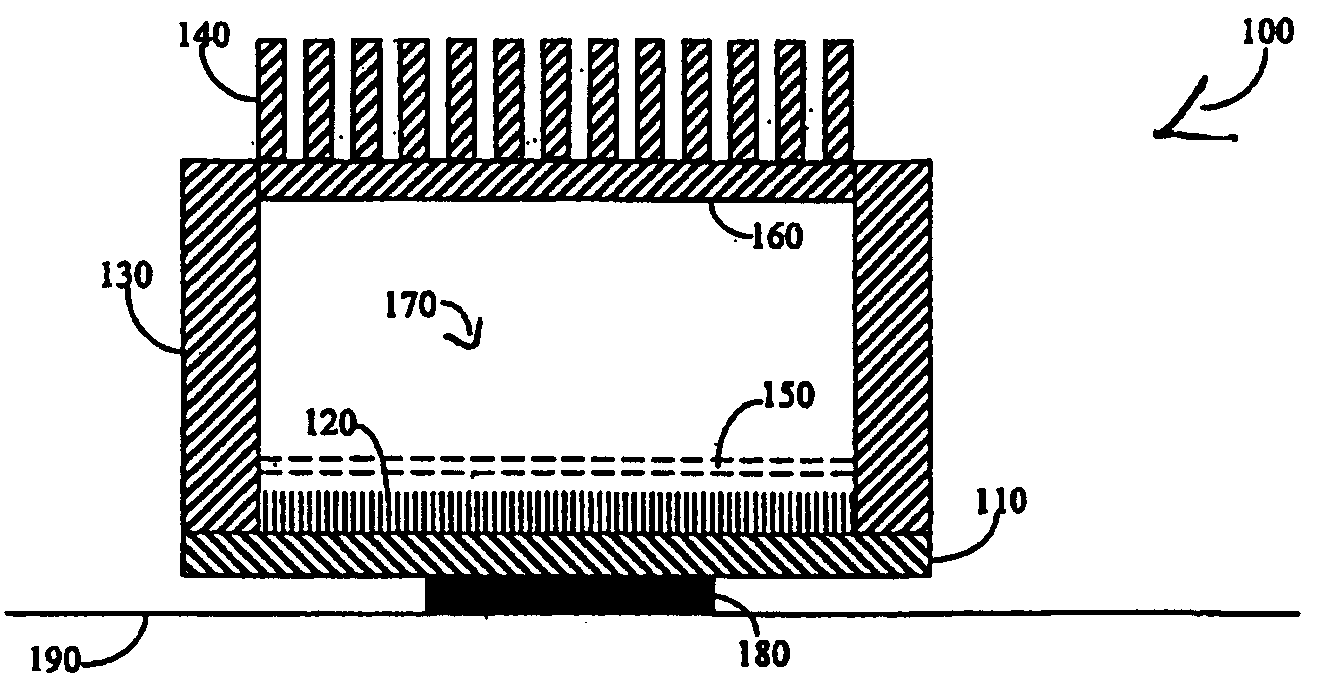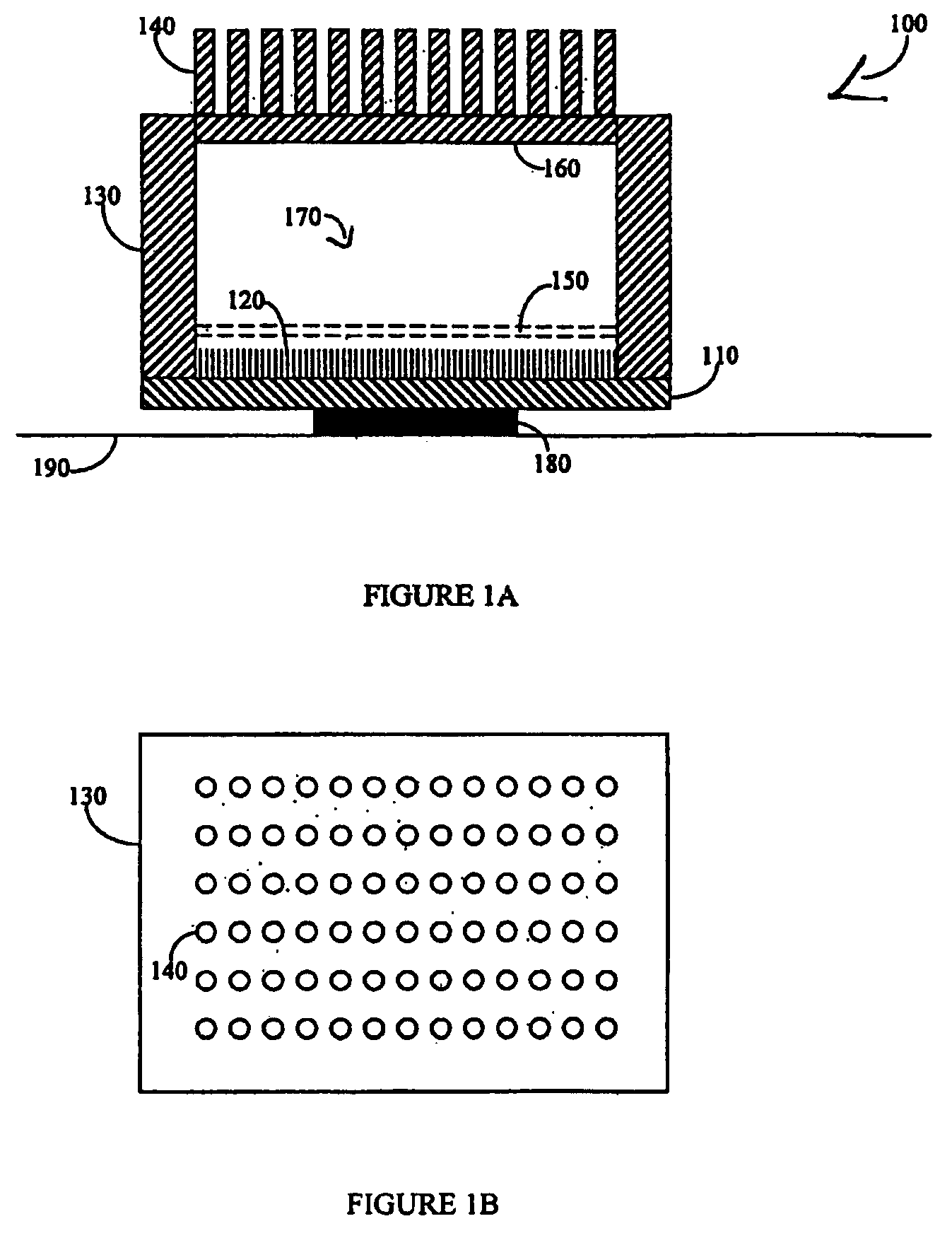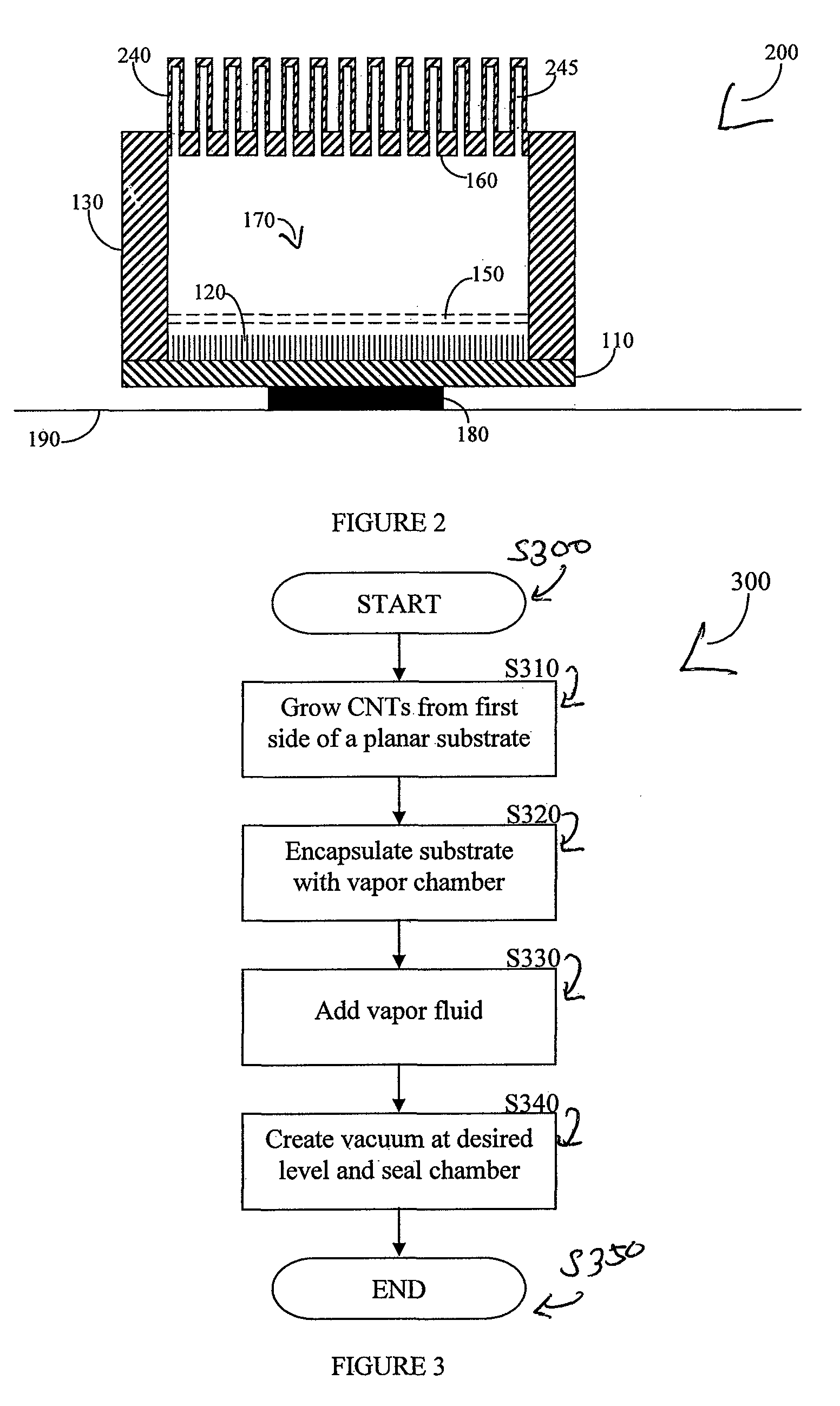Vapor chamber heat sink having a carbon nanotube fluid interface
a carbon nanotube and fluid interface technology, applied in semiconductor devices, lighting and heating apparatus, semiconductor devices, etc., can solve problems such as and affecting the use of heat sinks
- Summary
- Abstract
- Description
- Claims
- Application Information
AI Technical Summary
Benefits of technology
Problems solved by technology
Method used
Image
Examples
Embodiment Construction
[0017]The presently preferred embodiment of the invention provides an enhanced heat transposer comprised of a vapor chamber. The surface of the vapor chamber that holds the fluid comprises an array of carbon nanotubes (CNTs) that are grown in a way that enables the fluid to come into maximum contact with the CNTs. The fluid evaporates in the sealed vapor chamber when it is in touch with a hot surface. The resulting vapor comes in contact with a hollow pin-fin structure that provides additional surface for vapor cooling and heat transfer. The condensed vapor then drops back to the fluid container, and the cycle continues.
[0018]FIGS. 1A and 1B show a first embodiment of a vapor chamber heat sink 100 according to the invention. The heat sink 100 comprises a substrate 110 and an encapsulating structure 130 that, when attached to the substrate 110 and sealed, forms a vapor chamber 170. A typical substrate thickness is between 2 and 15 millimeters. Prior to sealing, a vapor fluid 150 is a...
PUM
| Property | Measurement | Unit |
|---|---|---|
| length | aaaaa | aaaaa |
| length | aaaaa | aaaaa |
| thickness | aaaaa | aaaaa |
Abstract
Description
Claims
Application Information
 Login to View More
Login to View More - R&D
- Intellectual Property
- Life Sciences
- Materials
- Tech Scout
- Unparalleled Data Quality
- Higher Quality Content
- 60% Fewer Hallucinations
Browse by: Latest US Patents, China's latest patents, Technical Efficacy Thesaurus, Application Domain, Technology Topic, Popular Technical Reports.
© 2025 PatSnap. All rights reserved.Legal|Privacy policy|Modern Slavery Act Transparency Statement|Sitemap|About US| Contact US: help@patsnap.com



